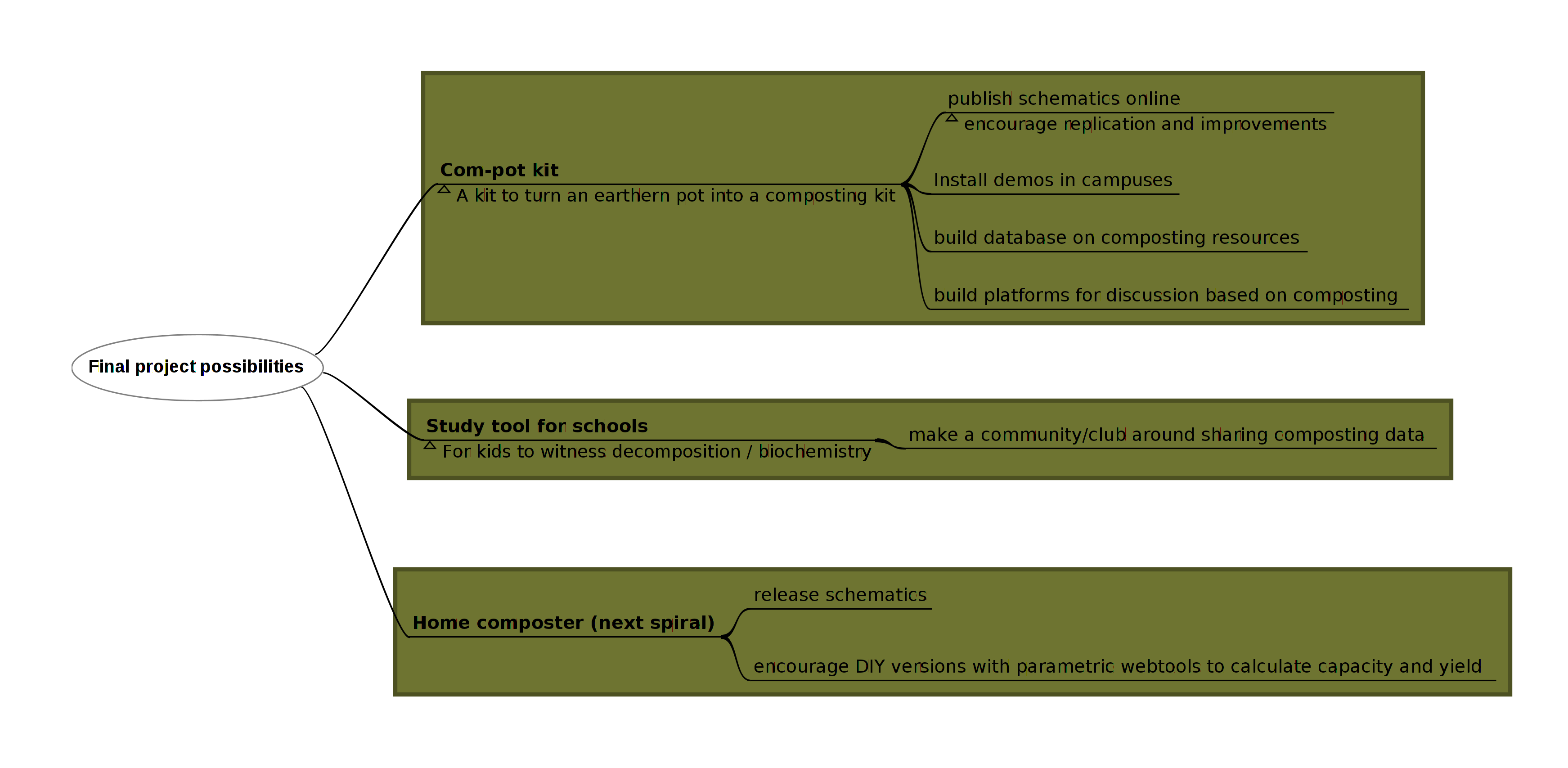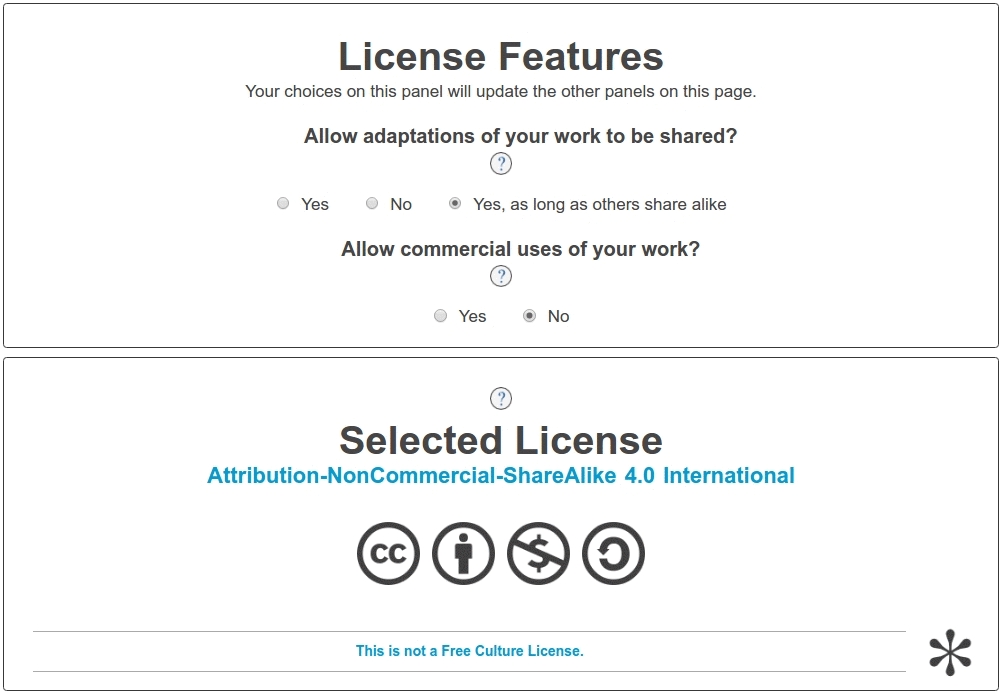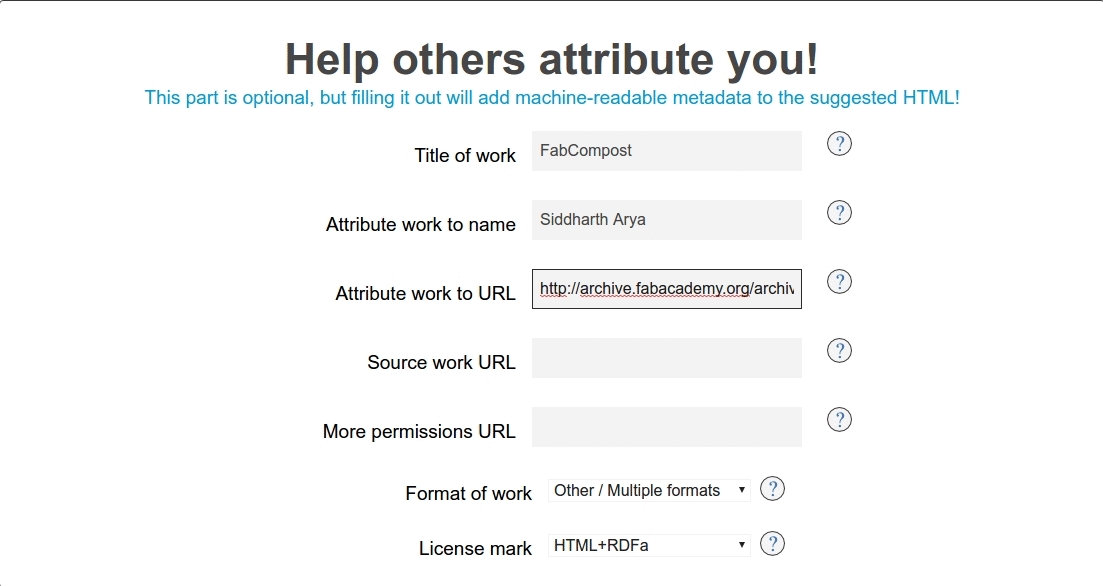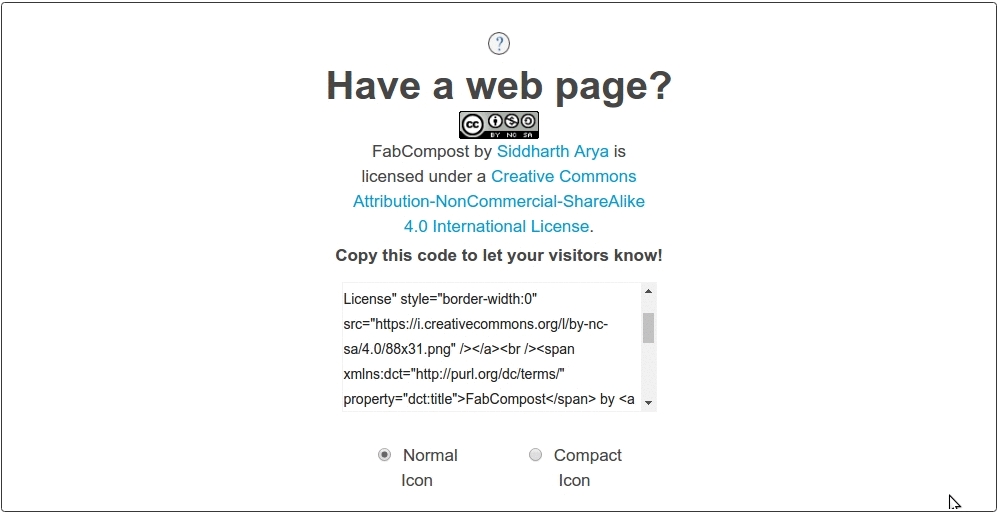Greetings, here lies my work-log at
______ _ ___ _ _____ _____ __ ______
| ___| | | / _ \ | | / __ \| _ |/ | |___ /
| |_ __ _| |__ / /_\ \ ___ __ _ __| | ___ _ __ ___ _ _ `' / /'| |/' |`| | / /
| _/ _` | '_ \| _ |/ __/ _` |/ _` |/ _ \ '_ ` _ \| | | | / / | /| | | | / /
| || (_| | |_) | | | | (_| (_| | (_| | __/ | | | | | |_| | ./ /___\ |_/ /_| |_./ /
\_| \__,_|_.__/\_| |_/\___\__,_|\__,_|\___|_| |_| |_|\__, | \_____/ \___/ \___/\_/
|_|
invention, intellectual property and income
index
assignment goals
- recognise the range of licenses available, summarize 2 kinds of licenses and choose one for one's project
- imagined and outlined possibilities and described how to make them probabilities
intro
copyrights, patents and other legalese has always been intriguing and intimidating at the same time, it's the alienesque language which is the source of the intrigue and the intimidation. I'm starting off by acquainting myself with creative commons as it's the most frequent one that i've come across. Other licenses that i've heard of are BSD, MIT, WTFYW licenses.
update - after a bit of reading, now I recognise the distinction between 'copyleft' licenses and permissive licenses (earlier, i just assumed copyleft was a street pun). I also understood that some licenses are specific for the kind of work being licensed. Another crucial distinction I learnt was the distinction between 'public domain' works and 'open-source' licensed works. Thanks wikipedia (>.>)
learning about 'creative commons'
Most of us would have come across CC attributed licenses on wikipedia articles, wikimedia or on flickr photos, I know that there are a few variants of CC and they have their associated icons to depiect the variant - time to learn more; below are the resources i refered to for more info
relevant links
summary
- the focus of the 16 year old foundation as stated by them is the 'expansion of reasonable and flexible copyright
- an estimated 1.1 billion works are licensed unfer various CC licenses
- all CC licenses grant the basic right to distribute the work worldwide for non-commercial purposes without modifications
- permutations and combinations of these following rights along with the baseline right form the different variants of the cc license.
- ATTRIBUTION right - (BY) - Licensees may copy, distribute, display and perform the work and make derivative works and remixes based on it only if they give the author or licensor the credits (attribution) in the manner specified by these.
- SHARE-ALiKE right - (SA) - Licensees may distribute derivative works only under a license identical ("not more restrictive") to the license that governs the original work. (See also copyleft.) Without share-alike, derivative works might be sublicensed with compatible but more restrictive license clauses, e.g. CC BY to CC BY-NC.)
- NON-COMMERCIAL right - (NC) - Licensees may copy, distribute, display, and perform the work and make derivative works and remixes based on it only for non-commercial purposes.
- NO-DERIVATIVE WORKS right - (ND) - Licensees may copy, distribute, display and perform only verbatim copies of the work, not derivative works and remixes based on it
- CC is not recommended for software programmes as it doesn't have terms specific to the dealings of source code
- the CC foundation recommends licenses made available by the 'Free software foundation' and the the ones approved by the 'Open source Initiative'
- although; software documentation, databases, music and game assets can be released under CC
- Important - CC licenses are non revocable ! ! Works once released under CC, can't be revoked later.
CC license variants

image source - wikipedia
learning about the GNU General Public License
intro
this is the second most common license i've come across mostly whilst installing open source softwares. GNU is an operating system and a collection of computer softwares.The GNU GPL licenses were written by Richard Stallman of the well-known Free Software Foundation, i presume he wrote it to release 'GNU software packages' under this license.
learning resources
variants
Following are the variants of the GNU GPL licenses
- GNU General Public License v4 - for software packages
- GNU Lesser General Public License - for libraries
- GNU Affero General Public License - for softwares that run on networks
- GNU Free Documentation License - for manuals, textbooks and other documentation
summary
- the emphasis is on retaining the freedom of the end users to run, share and modify the software as opposed to works in the public domain where a middleman can copyright the public domain works thereby denying the freedoms of the people who use the work furtherdown the chain.
- this is different from 'permissive licenses' like the BSD license or the MIT license
- the success of linux systems are partly attributed to this idea of a 'copyleft' license, wherein contributors to the kernel are rest assured that their contributions will not be exploited by a company
- GNU license has variants as shown above
- GNU GPL is historically one of the most popular licenses used in the open source domain
- there is an ''any later version'' clause in the license which updates a work's license to a newer version of the GPL when released, but this clause can be omitted as seen in the linux kernel's case which has decided to stick to the GPL v2
the MIT license
intro
i noticed most fabacademy students have chosen this license and apparently, as of 2015 this license was the most used.
this is it
Copyright (c) {year} {copyright holders}
Permission is hereby granted, free of charge, to any person obtaining a copy
of this software and associated documentation files (the "Software"), to deal
in the Software without restriction, including without limitation the rights
to use, copy, modify, merge, publish, distribute, sublicense, and/or sell
copies of the Software, and to permit persons to whom the Software is
furnished to do so, subject to the following conditions:
The above copyright notice and this permission notice shall be included in all
copies or substantial portions of the Software.
THE SOFTWARE IS PROVIDED "AS IS", WITHOUT WARRANTY OF ANY KIND, EXPRESS OR
IMPLIED, INCLUDING BUT NOT LIMITED TO THE WARRANTIES OF MERCHANTABILITY,
FITNESS FOR A PARTICULAR PURPOSE AND NONINFRINGEMENT. IN NO EVENT SHALL THE
AUTHORS OR COPYRIGHT HOLDERS BE LIABLE FOR ANY CLAIM, DAMAGES OR OTHER
LIABILITY, WHETHER IN AN ACTION OF CONTRACT, TORT OR OTHERWISE, ARISING FROM,
OUT OF OR IN CONNECTION WITH THE SOFTWARE OR THE USE OR OTHER DEALINGS IN THE
SOFTWARE.
summary
- As a permissive license, it puts only limited restriction on reuse and has, therefore, excellent license compatibility
- "Basically, you can do whatever you want as long as you include the original copyright and license notice in any copy of the software/source"-TLDRLegal
learning resources
TLDRLegal entry on MIT license'
wikipedia article on MIT license
licensing this website and my project
this website (assignment webpages) is compromised of the following
- text documentation
- images/screenshots
- bad puns
- drawing files in various formats (hmm, do file formats carry with them inherent licenses? gotta find out)
- software programs mostly in '.c' file format
all of which probably qualifies as documentaion, so I've deccided to go with the CC-00 license which permits nearly unrestrictive use of my writings and screenshots.
my final-project on the otherhand has
- design files, again in various file formats
- hand sketches
- text documentation
- media files
- data
I'm choosing the creative commons license as I don't intend to monetize the actual product itself, and wish to see others improve and adapt the design to individual needs.However, I'm quite torn about commercial uses, should be allowed or not. A commercial entity might propogate the design further, but it's unlikely i suppose.
project dissemination

as summarized above, i envision the three following possibilities
- To make a 'Com-pot kit' - A kit compromised of items used to retrofit an earthern pot into a composting kit
- Use the compost bin as a Study tool for school-children
- Home composter (next spiral)
The steps listed below is how I would go about turning the possibilities mentioned above into probabilities
- publish schematics online
- Install demos in campuses
- build database on composting resources
- build platforms for discussion based on composting
- make a community/club around sharing composting data
- encourage DIY versions with parametric webtools to calculate capacity and yield
File DOwnloads
Here lies all my FabAcademy files weekly seperated in a google drive - I did this as my data was lost in a burnt laptop, and all my files are scattered. I shal soon organise them and upload to the archive as soon as possible to comply with the requirements for evaluation. Apologies. Files repo









